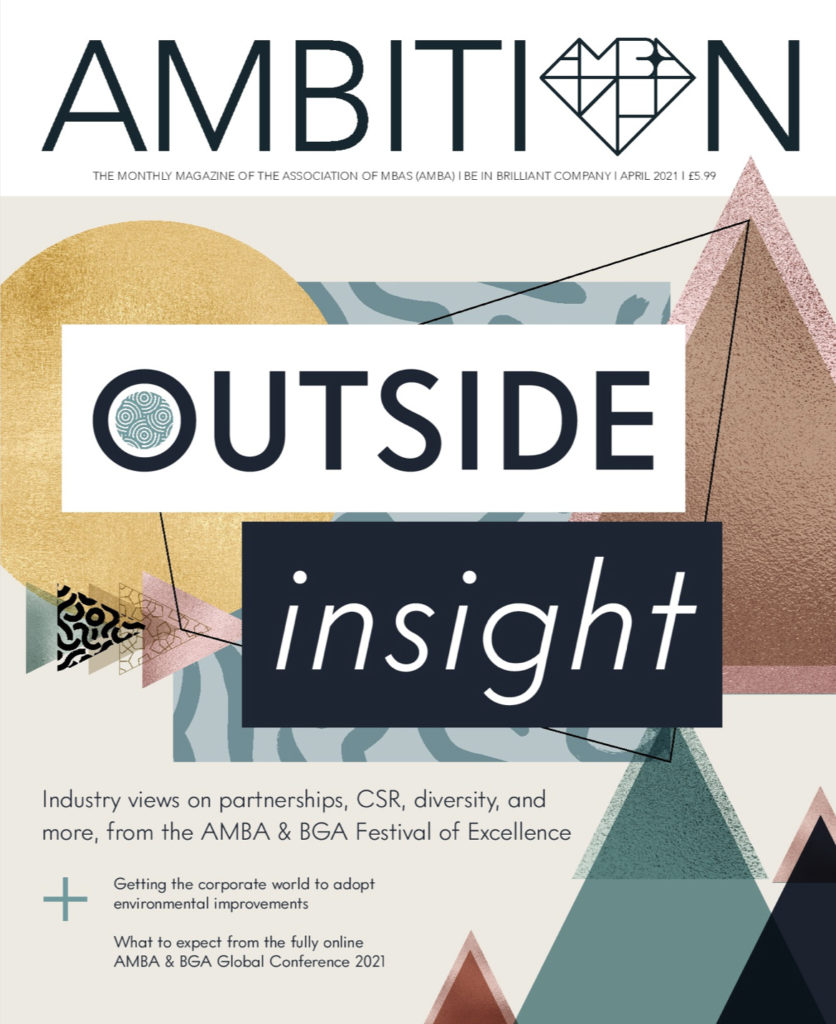As the world looks to emerge from the Covid-19 pandemic, a ‘crisis environment’ in which creative ideas and innovations have flourished also presents business school leaders with an opportunity to direct their organisations to make seismic changes in diversity and inclusion (D&I). Through direct action and a ripple effect, they can improve the economic opportunities for underrepresented segments of society.
As such, a session at the AMBA & BGA Festival of Excellence explored options for enhancing and developing diversity strategies in business education, drawing on insight from experts in the field and those who have developed D&I initiatives in international corporate organisations – with inspiring results.
Peter MacDonald, panel chair and Director of Business School Services at Advent Group, explained that there has been a large body of research showing that people want to feel that they are a ‘part of something’, citing demonstrable business benefits in terms of performance in relation to this.
With that in mind, how can organisations today fast-track moves towards a more inclusive and diverse culture? What more could and should business schools be doing in terms of curriculum development around these points?
Defining inclusive leadership
Sheree Atcheson, Board Member at Women Who Code, explained: ‘Business schools can define what inclusive leadership looks like before people go out into different businesses or start their own businesses. I think this opportunity should not be wasted. [Business schools] have an opportunity to embed inclusive principles and leadership techniques, so we aren’t continually having the same problems in trying to retrospectively train leaders on what it means to run an organisation inclusively, what it means to measure inclusion as well as diversity, and so on.
‘The purpose of measurement is you can check if initiatives are working for you and going in the right direction, or if they are not. The key part of this for business schools is the role modelling of this behaviour.’
Taking the conversation further, Paul Sesay, CEO and Founder of Inclusive Companies, added: ‘A lot of organisations go wrong because they think that one shoe fits all. D&I is unique to an individual organisation – you can’t cut and paste initiatives. From an inclusion perspective, you have to look at the HR processes that are unique to your leadership culture before you can really move forward with inclusion. It has to come from the very top as well, from the CEO downwards to the operational staff.
‘You’ve got to look at the culture within the organisation in order to make change and you’ve got to have difficult conversations to know what needs to be done. You may think that your culture is a certain way but when you dig into the lived experiences of individuals at work, it’s often completely different.’
Embedding learning about difference into core curricula
Looking more specifically at the topic of diversity within business schools, Stephen Frost, CEO and Founder of Frost Included, explained: ‘It is a core part of leadership that we learn about difference, and that we learn about how to manage difference and how to learn from difference in order to empathise. That isn’t just a soft skill, it’s critically important for customer service, marketing, negotiation, and strategy. So, it’s about embedding this, not as a separate module, but as a core part of curriculum design.
‘This also forms part of the values that are upheld by the School itself. On the one hand, there are some obvious things, like supporting D&I and dealing with psychological safety. But it’s also about making sure that it’s clear to everyone that it’s OK to have the debate. Sometimes we have to create safe spaces where people can fail, where they can use the wrong language and where they can ask questions – where they are educated and not simply belittled.’
Closing a lively debate, Juan Pablo Otero, CSR expert and D&I activist, proffered that D&I is not just about presence, but also representation: ‘Sometimes, we think that if we have someone with disabilities in our organisation we are OK, or if we have someone from another race or country then we are okay, but at the end only 5% of the organisation is part of a minority,’ he said. ‘We need to set goals and measure what we are in the beginning and where we want to get to. In that way, we will see our little steps.
‘We all expect big changes. What we have been living through in the last year, has shown us that we are all vulnerable. When we go back to the office, we won’t be the same as we were last year. We are going to be more sensible. This pandemic has shown us that we are so different, but we are living through the same experience across the world. This period has shown us that the only way we can solve problems is by working together. One of the advantages of the situation we are living through is that it has revealed a lot about inclusion because we have been involved in teamwork and working with all people.’








